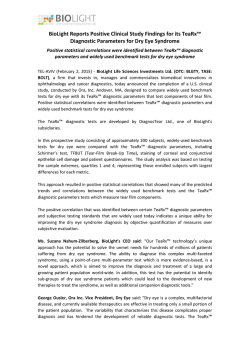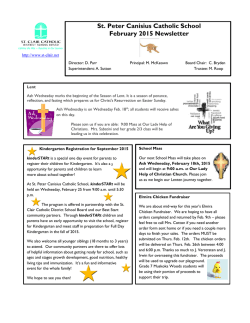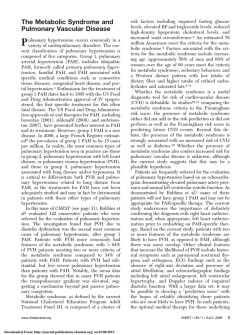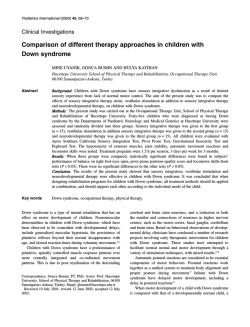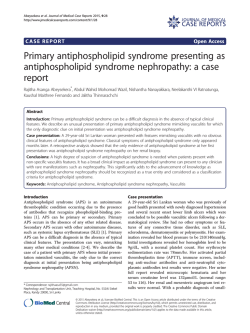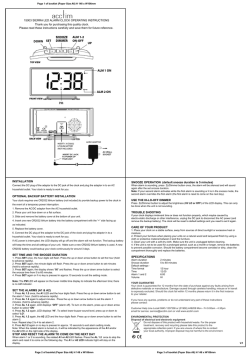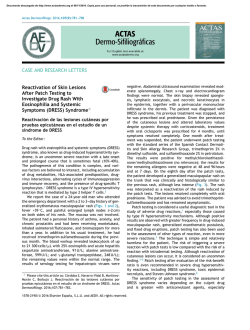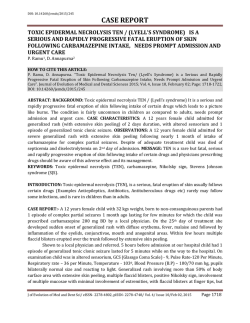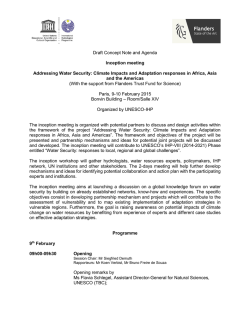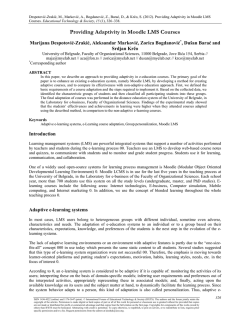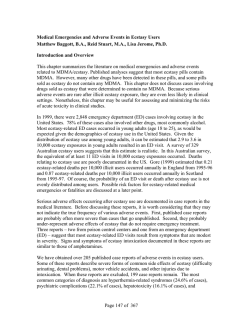
Hans Selye and the Field of Stress Research A
NEUROPSYCHIATRY CLASSICS Hans Selye and the Field of Stress Research A Syndrome Produced by Diverse Nocuous Agents Thomas C. Neylan, M.D. Section Editor Hans Selye T he next article in our series is one of the first reports from Hans Selye, who pioneered research on biological effects of exposure to stressful stimuli. This article is a cornerstone of neuropsychiatry because it led to the study of the effects of stress and hormones, particularly corticosteroids, on brain function. Hans Selye (1907–1982), a native of Hungary, founded the Institute of Experimental Medicine and Surgery at the University of Montreal and later the International Institute of Stress. During the half-century of his research career he authored or co-authored more than 1,700 publications, including 40 books.1 The brief report reprinted below summarizes, in five dense paragraphs, several years of experimentation that formed the empiric foundation of Dr. Selye’s concept of the General Adaptation Syndrome. This syndrome consists of an enlargement of the adrenal gland; atrophy of the thymus, spleen and other lymphoid tissue; and gastric ulcerations. He describes in this report three stages of adaptation, including an initial brief alarm reaction, followed by a prolonged period of resistance and a terminal stage of exhaustion and death. This foundational work led to a rich line of research on the biological functioning of glucocorticoids. Dr. Selye was greatly influenced by Walter B. Cannon, who had focused on the role of the sympathetic nervous system in adaptation and coined the terms “fight-orflight responses” and “homeostasis.”2 Although Dr. Selye’s view that stress responses are nonspecific has been challenged (for review, see Goldstein3), his legacy of empiric research remains extremely influential today. References 1. Szabo S: The creative and productive life of Hans Selye: a review of his major scientific discoveries. Experientia 1985; 41:564–567 2. Cannon WB: The Wisdom of the Body. New York, WW Norton, 1939 3. Goldstein DS: Stress and science, in Adrenergic Dysfunction and Psychobiology, edited by Cameron OG. Washington, DC, American Psychiatric Press, 1994, pp 179–236 230 E xperiments on rats show that if the organism is severely damaged by acute nonspecific nocuous agents such as exposure to cold, surgical injury, production of spinal shock (transcision of the cord), excessive muscular exercise, or intoxications with sublethal doses of diverse drugs (adrenaline, atropine, morphine, formaldehyde, etc.), a typical syndrome appears, the symptoms of which are independent of the nature of the damaging agent or the pharmacological type of the drug employed, and represent rather a response to damage as such. This syndrome develops in three stages: during the first stage, 6–48 hours after the initial injury, one observes rapid decrease in size of the thymus, spleen, lymph glands, and liver; disappearance of fat tissue; edema formation, especially in the thymus and loose retroperitoneal connective tissue; accumulation of pleural and peritoneal transudate; loss of muscular tone; fall of body temperature; formation of acute erosions in the digestive tract, particularly in the stomach, small intestine, and appendix; loss of cortical lipoids and chromaffin substance from the adrenals; and sometimes hyperemia of the skin, exophthalmos, [and] increased lachrymation and salivation. In particularly severe cases, focal necrosis of the liver and dense clouding of the crystalline lens are observed. In the second stage, beginning 48 hours after the injury, the adrenals are greatly enlarged but regain their lipoid granules, while the medullary chromaffin cells show vacuolization; the edema begins to disappear; numerous basophiles appear in the pituitary; the thyroid shows a tendency towards hyperplasia (more marked in the guinea pig); general body growth ceases and the gonads become atrophic; in lactating animals, milk secretion stops. It would seem that the anterior pituitary ceases production of growth and gonadotropic hormones and prolactin in favor of increased elaboration of thyrotropic and adrenotropic principles, which may be regarded as more urgently needed in such emergencies. “A Syndrome Produced by Diverse Nocuous Agents,” by Hans Selye (Department of Biochemistry, McGill University, Montreal, Canada) is reprinted by permission from Nature (vol. 138, July 4, 1936, p. 32); copyright ᭧ 1936 Macmillan Magazines Ltd. VOLUME 10 • NUMBER 2 • SPRING 1998 NEUROPSYCHIATRY CLASSICS If the treatment be continued with relatively small doses of the drug or relatively slight injuries, the animals will build up such resistance that in the later part of the second stage the appearance and function of their organs returns practically to normal; but with further continued treatment, after a period of one to three months (depending on the severity of the damaging agent), the animals lose their resistance and succumb with symptoms similar to those seen in the first stage, this phase of exhaustion being regarded as the third stage of the syndrome. We consider the first stage to be the expression of a general alarm of the organism when suddenly confronted with a critical situation, and therefore term it the “general alarm reaction.” Since the syndrome as a whole seems to represent a generalized effort of the organism JOURNAL OF NEUROPSYCHIATRY to adapt itself to new conditions, it might be termed the “general adaptation syndrome.” It might be compared to other general defense reactions such as inflammation or the formation of immune bodies. The symptoms of the alarm reaction are very similar to those of histamine toxicosis or of surgical or anaphylactic shock; it is therefore not unlikely that an essential part in the initiation of the syndrome is the liberation of large quantities of histamine or some similar substance, which may be released from the tissues either mechanically in surgical injury, or by other means in other cases. It seems to us that more or less pronounced forms of this three-stage reaction represent the usual response of the organism to stimuli such as temperature changes, drugs, muscular exercise, etc., to which habituation or inurement can occur. 231
© Copyright 2025

